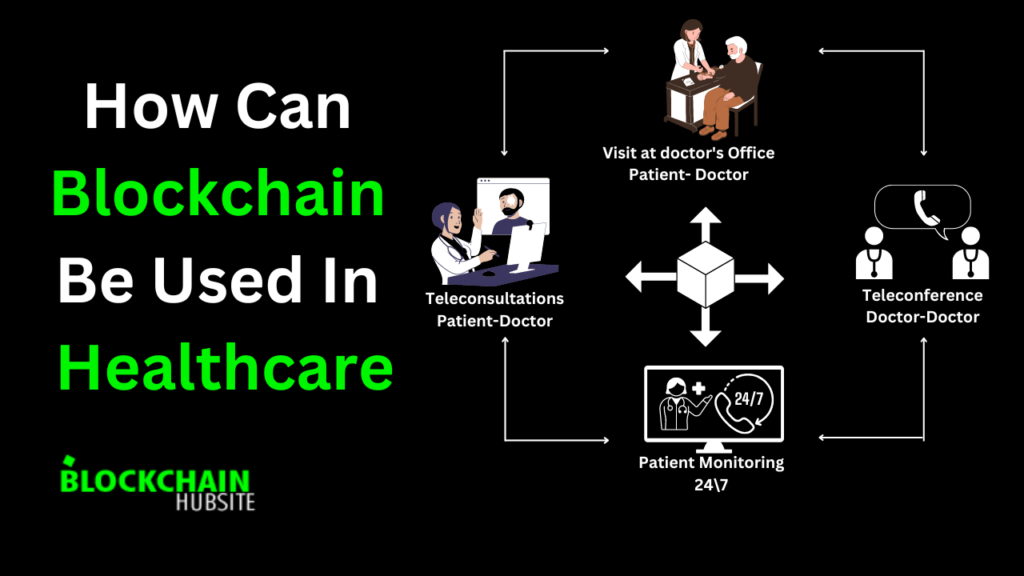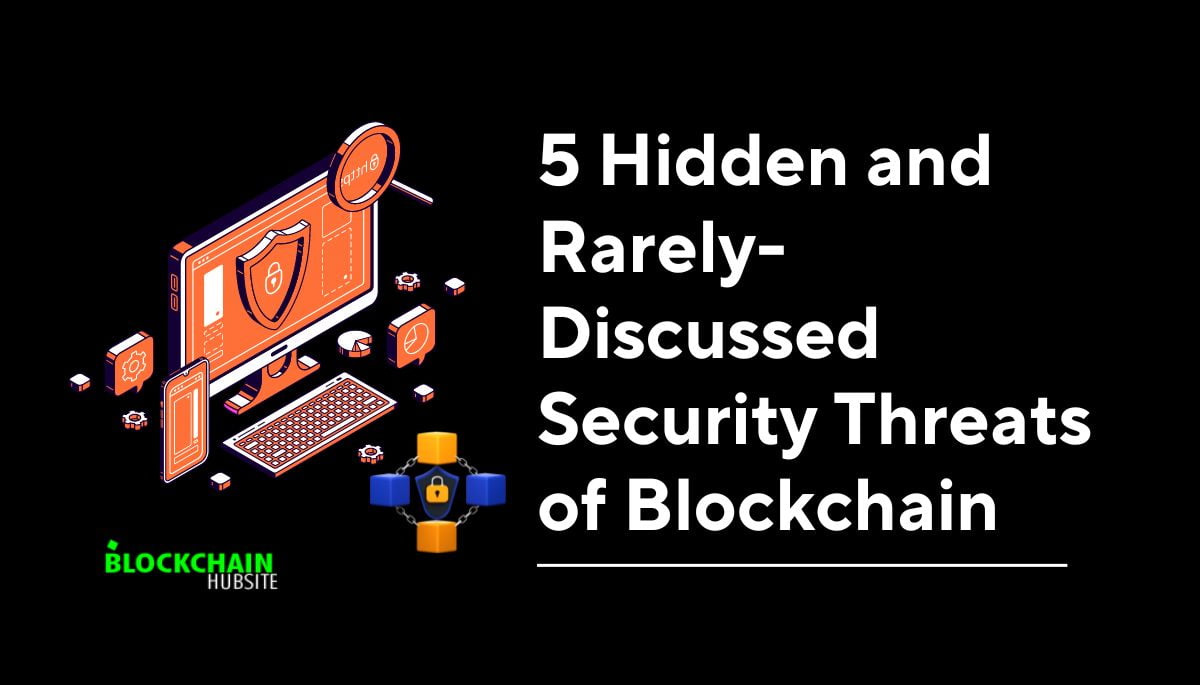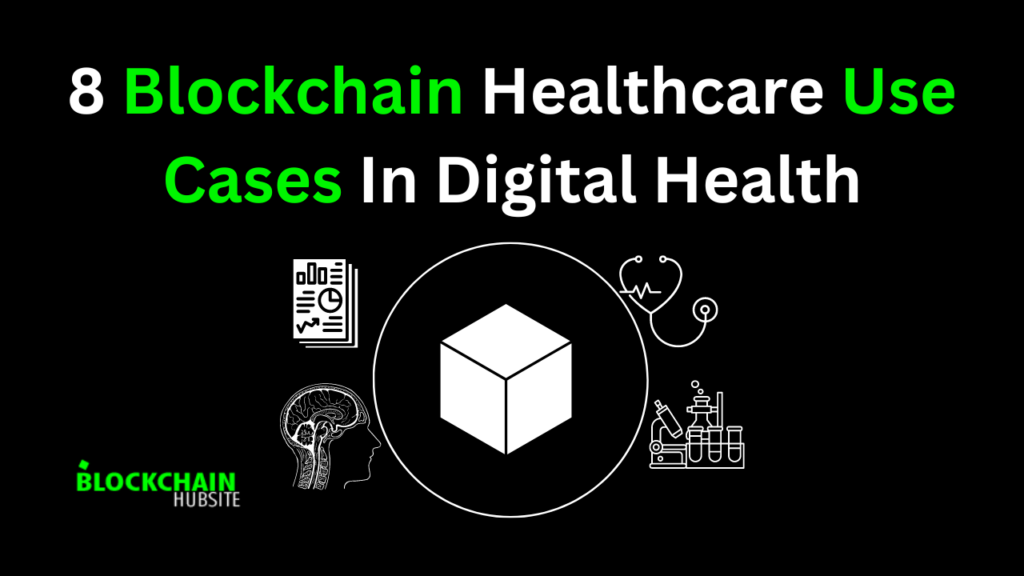
Table of Contents
The lack of transaction traceability in healthcare services causes some concerns. The fragmentation of healthcare information over many separate databases, or silos, hurts research activities and administration. About half of the clinical preliminary tests didn’t show any cases. Unsatisfactory and counterfeit drugs continue to be a significant issue, and prescription disclosure costs rise.
Blockchain technology may provide solutions to these enormous issues. Blockchain technology stores and records internet transactions in a secure, distributed database. Blockchain technology has many potential uses in the healthcare industry, including enhancing mobile health applications, preserving preliminary clinical data, and managing insurance information.
Each block consists of an independent unit that stores its report and a dependent link that enables it to be regulated by participants who independently store and share data. There is no involvement from a third party. Blockchain technology allows participants to share data progressively without exposing the network to hacking, fraud, or forgery risks.f
This article covers how can blockchain be used in healthcare to revolutionize patient care and improve the overall effectiveness of the healthcare system.
The significance of Blockchain in Healthcare
There is an urgent need for the speedy construction of modern medical facilities with advanced technology. Blockchain is an exciting new technology that could significantly alter the future of medical care. Its implementation has the potential to bring about substantial improvements by facilitating the provision of proper patient care and the delivery of high-quality healthcare services by healthcare organizations.
The current healthcare system is shifting towards a patient-centric model, emphasizing two essential components: ready access to services and availability of adequate healthcare resources. The use of blockchain technology is crucial to achieving these objectives. It speeds up and simplifies the time-consuming and repetitive process of Health Information Exchange. This saves time and money in the healthcare business.
Blockchain technology enables citizens to participate actively in health study programs, improving analysis and data exchange. This, in turn, results in better treatment options for different communities. Also, the whole healthcare system and all the organizations that work with it are managed by a single database.
Protecting, sharing, and interoperating with patient data is one of the biggest obstacles in healthcare today, especially in population health management. Blockchain technology successfully addresses these problems. Healthcare systems can benefit from Blockchain technology in several ways, including increased security, easier data transmission, better interoperability, more reliable data, and the ability to update and access data in real time. Additionally, this technique solves concerns regarding data protection in personal health care and wearable devices. Medical professionals and patients need a safe, simple way to record, transmit, and access network data. These problems can be resolved with the use of blockchain technology.
Blockchain in Healthcare Uses Cases

1. Management of Data in Healthcare Sector
One of the most important aspects of running a healthcare business is managing patient records, which requires storing and providing access to sensitive data. Legitimate healthcare data management improves patient care by allowing comprehensive patient views, personalized treatments, and constructive communication. It’s also crucial for keeping the healthcare system running efficiently and economically. In healthcare, BC has the potential to provide practical information sharing while ensuring data integrity and protecting patient confidentiality. By correctly combining it with other technologies, we may create HIEs that are safe, effective, practical, and interoperable.
The acceptance of BC may also speed up the creation of a patient-driven healthcare model in which individuals have more say over their health records. In many countries, people are solely responsible for their healthcare records. Therefore one way to avoid administrative hurdles is through a BC-enabled, patient-driven healthcare information architecture. Several organizations focus on creating an HIE in British Columbia and using it as the foundation for an information and services marketplace.
Most are learning about EHRs, while the rest are improving their skills in a specific area. One such open-source BC platform for EHR administration is Medrec. They are working along with Beth Israel Deaconess Medical Center. It is currently constructing an HIE that its BC will manage. Mindshare enables BC-based information exchange of electronic clinical records across untrusted parties through the presentation of information provenance, inspection, and follow-up. They claim that their system can successfully track information behavior and refuse access to disregarded norms and authorizations on the information using smart contracts and an entrance control framework.
2. Research in Pharmaceutical Sector
The pharmaceutical industry relies heavily on the results of drug discovery research. Many pharmaceutical companies need to figure out how to take the team seriously in light of rising healthcare costs and the pressing necessity to advance quickly on new treatments. The technological infrastructure can be empowered by blockchain, which will stimulate the transfer of confidential information and information among various parties.
The use of BC strengthens Intellectual Property (IP) through permanent records for partnership. Most of the time, when research and drug development aren’t working together, BC helps with keeping track of and managing different parts of clinical trials, such as information management, consent management, keeping track of signs of drug use, and so on.
3. Role of Supply Chain in Healthcare
The supply chain plays a significant role in the clinical industry. Proper monitoring and following are required to guarantee optimal and expected use, beginning with the raw materials and production and continuing through the many stages of capacity and appropriation. BC provides a perfectly adequate response to this need for following and following, with the data being maintained in a public yet secure and properly constructed framework accessible to many different groups.
4. Blockchains in Medical Fraud Detection
One significant use of blockchains in the medical field is managing the supply line for medicines. Safeguarding supply management is an essential concern across industries, but the healthcare sector’s growing complexity requires special attention. This is because any problem in the healthcare supply chain affects a patient’s health.
Supply chains are vulnerable to fraud because they have many moving elements and people. Blockchains provide a safe and secure way to solve this problem and, in some cases, stop theft from happening by making data more transparent and making it easier to track where a product came from. Manipulating the blockchain is problematic since a record in the blockchain can only be validated and modified via a smart contract.
5. Patient Prescription Management
The optimum healthcare delivery is only possible with careful prescription management. The misuse of prescription medication has become increasingly common in recent years, which has led to widespread problems such as the opioid disaster. BC-based arrangements are proposed to remove prescription management difficulties.
6. Billing Management
Clinical considerations’ financial implications are paramount in the healthcare system. Using BC may help fix the numerous problems in the healthcare financing sector, most of which relate to a lack of transparency and confidence—the use of smart contracts in premium planning platforms. Current health information, drug usage, lifestyle factors, etc. linked through BC to premium calculations via smart contracts. At that point, if many parties or mediators are involved in taking care of the claim, there may be thousands of duplicate tasks and checks, which can be troublesome for the end clients.
7. Role of Telemedicine in Healthcare Sector
Telemedicine is another area of healthcare that can benefit from the application of BC technology since it can serve as a trust layer between patients and healthcare professionals. In addition to approving professionals’ identities and information, a BC-based telemedicine plan can guarantee transparency and encourage participants to act appropriately by providing extensive measurements.
Remote demonstration services within telemedicine may be the leading edge of BC adoption. Evidence-based services that rely solely on the quantitative and subjective translation of clinical information in the absence of a patient must, as is likely well-known, first adopt the BC approach. Numerous startups are concentrating on fields like dermatology, where the interpretation of patient-generated imaging data is crucial to diagnosing a condition.
Blockchain Adoption Challenges in Healthcare

Interoperability & integration with the legacy systems
There are a lot of technologies, devices, and components in the healthcare space, not to mention people who all work together to meet the current needs in the area. Blockchain technology offers the potential to cover up some of the vast opportunities for improvement. While undoubtedly significant, blockchain technology would still be a part of the whole. Integrating blockchain technology into preexisting infrastructure is challenging for several reasons, including compatibility.
The fact that there are so many different devices and categories of healthcare gadgets adds to the complexity. Everyone with a stake in expanding blockchain’s application in healthcare should work together towards that end. If blockchain can’t help these stakeholders and necessary parties work together, it doesn’t have much value beyond being a simple and valuable tool for solving some trust problems. Even with the blockchain, many existing issues in ecosystem construction will remain. The education of healthcare IT workers is also a significant topic of this analysis. If blockchain technology enters healthcare, these workers may need retraining on blockchain technology.
Adoption and incentives for participation
Adopting blockchain technology in healthcare will necessitate the coordination and cooperation of various stakeholders, as was previously discussed. Some of these players could be the hospital, the people who make the devices, the people who work in the hospital, the patients, and so on.
As the adoption of blockchain technology would require cooperation from several stakeholders and some changes to each stakeholder’s current working and business model, it would make sense for these stakeholders to expect something in return for helping to make the changes.
New business structures that offer equitable incentives to all parties involved are needed to manage these expectations. The incentives should account for the costs and efforts of establishing or adopting blockchain-based technology and any required operational model modifications. Think about the potential for managing patient information using blockchain technology.
A workable business model acceptable to patients, device manufacturers, back-end IT solution providers, hospitals, etc., is required to provide a fair incentive structure. Since this application is still maturing, it will be some time before there is an abundance of tried and tested, effective incentive models. In the meantime, any danger that comes with a particular incentive model must be carefully evaluated and as accurately as possible measured.
Uncertain cost of operation
Blockchain offers attractive properties, such as decentralization (and hence no single point of failure), transparency, and speedy transaction settlement, but its operational costs still need to be determined. The present conventional information systems and data exchanges in the healthcare sector need considerable time, money, and human capital.
On top of that, there are costs associated with constantly updating the systems, fixing problems, making backups, and thinking about hackers and data breaches. The blockchain-based HIE system has the potential to be more efficient and cost-effective than the current HIE system. This could happen because of the improved security by design. However, in a healthcare organization’s business and operational strategy, the cost aspects of healthcare services based on blockchain technology must be carefully analyzed.
Regulation
Healthcare solutions must follow several rules because patients’ health and lives are at stake. In addition, health information raises the most privacy issues. Blockchain technology is a new technology that a small group of early adopters use. One of the challenges is ensuring that the solutions built on top of blockchain technology follow the rules and laws already in place.
Blockchain technology may still be in its infancy when finding a niche in the healthcare industry where it can adequately adhere to set healthcare standards and regulations. At the same time, existing HIE systems have multiple years to evolve toward meeting the regulatory requirements.
Solution providers should consider doing many pilot deployments and performing extensive testing and validation of the underlying technological components. The need for strict compliance with rules could motivate innovation in blockchain technology. One of the most prominent examples of a situation in which blockchain technology needs to adapt to meet regulatory standards is the EU’s recently adopted General Data Protection Rule (GDPR).
There is a two-way street between blockchain and GDPR. When a person (the data originator) is granted complete authority over their data, as is the case with regulations like the General Data Protection Regulation (GDPR), this immediately conflicts with the immutable nature of blockchain technology. Information on patients’ health is typically kept from the blockchain, with merely a hash or other identifier to serve as a link.
Using this method, a blockchain app can comply with the General Data Protection Regulation. It’s possible, nevertheless, to make the case that a cryptographic hash still constitutes personally identifiable information; this is a topic for further study. Eventually, more favorable trade-offs will emerge as regulatory compliance contributes to the growth and development of blockchain technology, paving the way for its even wider adoption.
Considering implementing General Data Protection Regulation–like regulations in blockchain applications is a sensible move at this time. On the other hand, GDPR and blockchain make excellent partners from a decentralization point of view. Patient-controlled healthcare data has increased interest as consumers become more privacy-conscious and privacy restrictions are enforced. Individuals can access and control their healthcare data and participate in the p2p global data exchange required for healthcare research and services, all powered by blockchain if user-friendly applications for managing personal data with proper security and incentive structures exist.
Governance
Blockchain’s distributed nature, at its core, makes it so helpful in creating a trustworthy transaction system involving several parties without relying on a trusted third party or central authority. However, there is more than one model for how a healthcare institution should run.
In some implementations of blockchain-based solutions, it may be necessary for one stakeholder to play the role of a regulator to ensure the smooth running of the network as a whole. For instance, this form of governance may be necessary to satisfy rules and regulations. How a system with several stakeholders can effectively administer such a governance structure is still being determined.
This aspect of governance will connect with the planned rewards systems. However, as the use of blockchain-based solutions grows in the healthcare industry, a wide range of approaches to meeting governance needs will emerge.
Scaling
The ability to scale the underlying blockchain network is essential for the widespread adoption of blockchain-based solutions across all industries, including healthcare. Semi-permissioned blockchains, which offer scalability and high transaction throughput at the expense of decentralization, will likely be used by multiple healthcare solutions. Permissioned blockchain networks will still require public blockchains for inter-blockchain communication.
In addition, only highly scalable public blockchains will allow for the creation of a global HIE powered by blockchain technology. Public blockchain networks like Bitcoin and Ethereum need to be faster and more expensive to support hosting any significant number of decentralized apps.
However, various scaling attempts are currently underway, and some are already being utilized in reality; examples include the lightning network, state channels, plasma chains, sharding, zk-snarks, etc. Public blockchains are expected to become fast and cheap enough for widespread use shortly.
Concluding Remarks
Thanks to its encryption and decentralized nature, blockchain technology can be used in novel ways to improve healthcare delivery. It has various advantages, including increased security for patients’ electronic medical data, the possibility to monetize health information, improved interoperability among healthcare institutions, and the ability to battle counterfeit drugs.
One of the most significant applications of Blockchain in the healthcare field is in digital agreements through smart contracts. This reduces the need for payment intermediaries, resulting in cost savings. To fully realize the promise of Blockchain in healthcare, supplementary sophisticated technologies such as system tracking, healthcare insurance, pharmaceutical tracing, and clinical trials must be implemented within the ecosystem.
Hospitals can use Blockchain frameworks to streamline their services across the board, including device tracking. Additionally, this technology can be used to better maintain patient histories, especially when tracking and resolving insurance disputes. So, optimized data management can speed up clinical actions.
Overall, the implementation of Blockchain technology has the potential to dramatically improve and, eventually, transform how patients and clinicians interact with and use clinical records, boosting healthcare services.
FAQs
1. Which blockchain is best for healthcare?
The best blockchain for healthcare is determined by specific demands and use cases; however, platforms such as Ethereum and Hyperledger Fabric are widely considered for their security and versatility.
2. How blockchain technology is used in the future of healthcare?
The future of blockchain in healthcare involves secure medical record management, supply chain tracking, and streamlined data sharing between providers, all of which will contribute to greater efficiency and patient outcomes.
3. What are the pros and cons of blockchain in healthcare?
The benefits of blockchain in healthcare include increased data security, transparent and auditable transactions, and improved interoperability. Cons: Scalability issues, potential privacy concerns, and implementation complexity.
4. Will blockchain save the healthcare system?
While blockchain has the potential to greatly enhance healthcare systems, it cannot save the entire system. It can be an effective technique to solve some issues, but for general betterment, thorough reform is required.
5. What are the problems with using blockchain in healthcare?
High computational requirements, potential data breaches if private keys are compromised, and the necessity for consistency among various healthcare organizations are all issues with adopting blockchain in healthcare.
6. What is an example of a healthcare blockchain?
One illustration of a blockchain in healthcare is MedRec. MIT researchers developed this prototype platform for managing electronic medical records while maintaining privacy and data control.
7. What is the main problem with blockchain?
The main issue with blockchain is its scalability. As more transactions are added to the chain, the network can grow slower and less efficient, preventing its wider adoption for high-volume applications.




